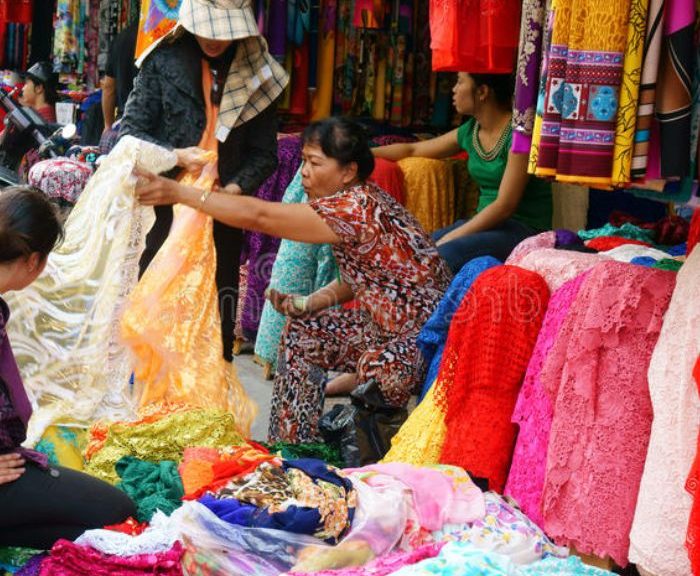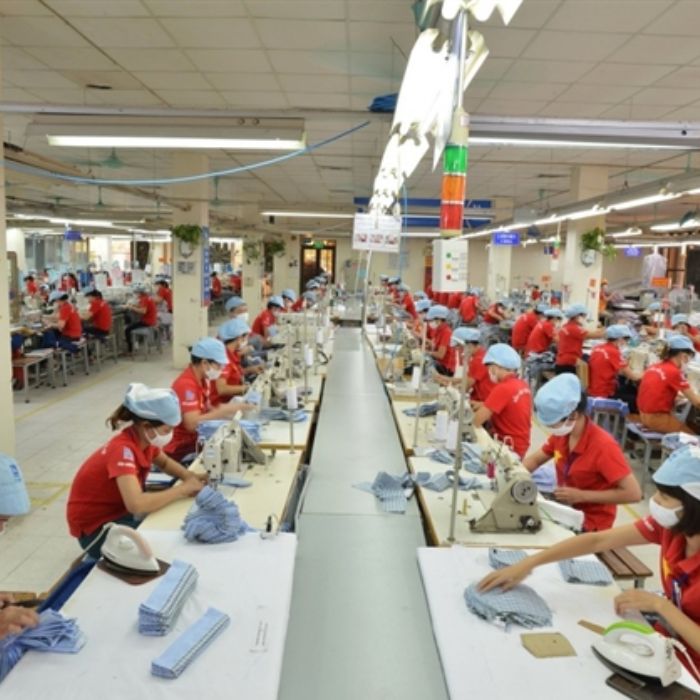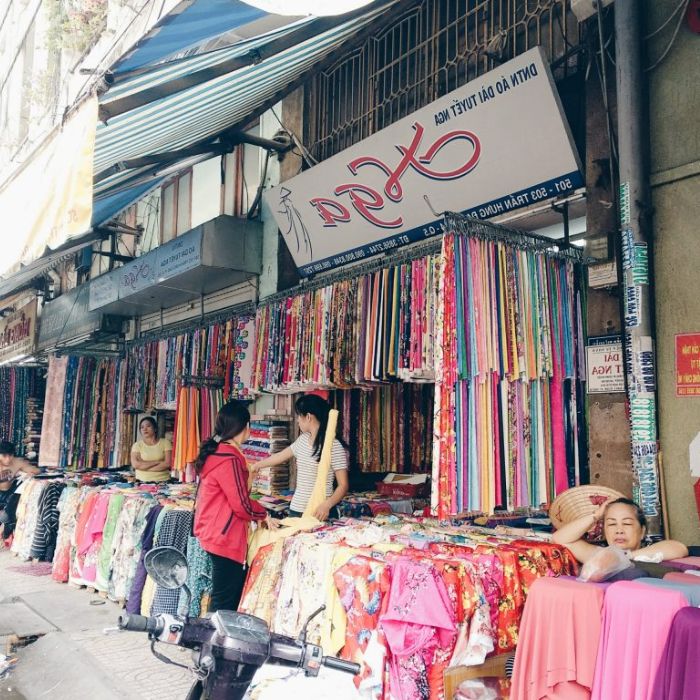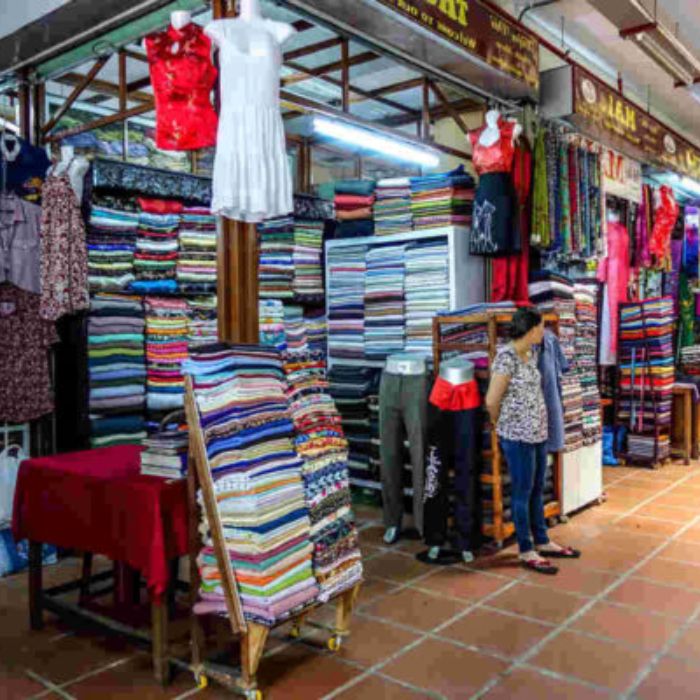
Vietnam fabric market and a complete guide
Vietnam has emerged as a significant player in the global textile and garment industry, with a booming fabric market catering to domestic and international demand. The country’s strategic location, favorable business environment, and competitive costs have made it a popular choice for companies looking to source high-quality fabrics at affordable prices. In this article, we will examine the Vietnam fabric market and what makes it a top destination for textile sourcing.
1. Overview of the Vietnam fabric market
The Vietnam fabric market is a thriving industry that produces a wide range of fabrics, including cotton, polyester, rayon, and silk. The country is known for its high-quality materials that meet international standards and has become a leading supplier to major brands and retailers worldwide.
Vietnam’s textile industry has proliferated over the past decade, with exports increasing from $6.2 billion in 2007 to $39 billion in 2020. The country’s textile and garment exports comprise a significant portion of its overall export revenue, employing millions of workers nationwide.
2. Factors driving the growth of the Vietnam fabric market
Vietnam has become a leading exporter of textiles due to several factors. Firstly, the country has a highly skilled workforce capable of producing a wide range of fabrics, from traditional silk and cotton to more modern synthetic blends.
Secondly, Vietnam has competitive labor costs, making it an attractive destination for textile manufacturers looking to reduce production costs. Below is 5 factors driving the growth of the Vietnam fabric market.
Trade Agreements and economic impact Vietnam fabric market
Moreover, Vietnam has favorable trade agreements with other countries, such as the EU and the US, which have helped to boost its textile exports.
The textile industry significantly contributes to Vietnam’s economy, accounting for around 15% of its GDP and providing employment for millions.
According to the Vietnam Textile and Apparel Association, the country’s textile exports reached $39 billion in 2019, making it one of the top textile exporters in the world.
Investment in technology and sustainability driving the growth of the Vietnam fabric market
Furthermore, Vietnam fabric market has invested heavily in technology and sustainability, which has helped to improve the quality of its textiles and reduce its environmental impact. The country has implemented several initiatives to promote sustainable textile production, such as the Zero Discharge of Hazardous Chemicals (ZDHC) program. Vietnam has also been investing in automation and digitalization to improve efficiency and reduce costs in the textile industry.
See more about:
Vietnam fabric suppliers and what to know
Vietnam t-shirts wholesale and potential for wholesalers
A skilled workforce affects Vietnam fabric market
Vietnam has a large pool of skilled workers trained in textile production and has experience working with different types of fabrics. The country’s textile industry employs over 3 million workers in the Vietnam fabric market, many of whom have received specialized training in textile production and design.

Vietnam fabric market: Strategic location
Vietnam is strategically located in Southeast Asia, making it a gateway to the region’s growing consumer market. The country also has access to key shipping routes, which allows for easy transportation of textiles and other goods to major markets around the world.
Vietnam fabric market: Competitive costs
Vietnam offers competitive costs for textile production, with lower labor and overhead costs compared to many other countries. This has made it an attractive destination for companies looking to source high-quality fabrics at affordable prices.
3. Some fabric types that are produced and traded in the Vietnam fabric market
The Vietnam fabric market is a dynamic and diverse industry that offers a wide range of fabric types, styles, and designs to suit buyers’ needs worldwide. Some of the most common fabric types that are produced and traded in Vietnam include:
- Cotton: Vietnam is known for producing high-quality cotton fabric, including both woven and knit varieties. Cotton is a popular choice for casual wear, sportswear, and home textiles.
- Polyester: Polyester fabric is widely used in Vietnam for its durability and wrinkle resistance. It is commonly used in sportswear, workwear, and outerwear.
- Rayon: Rayon is a popular choice for lightweight and breathable fabrics, such as dresses and blouses. Vietnam fabric market produces a variety of rayon fabrics, including both printed and plain types.
- Silk: Silk fabric is a traditional Vietnamese textile prized for its softness and luxurious feel. Vietnam produces a range of silk fabrics, including plain and patterned varieties.
- Denim: Denim fabric is used for various apparel, from jeans to jackets. Vietnam produces high-quality denim fabrics that are suitable for a range of applications.
In addition to these fabric types, the Vietnam fabric market also produces a wide range of synthetic and natural blends, as well as technical fabrics for industrial and outdoor applications.
4. The best Vietnam fabric market to shop for fabrics
Several major Vietnam fabric markets offer various fabrics at competitive prices. Here are some of the top fabric markets in the country.
- Dong Xuan Market: Located in Hanoi, Dong Xuan Market is one of the largest indoor Vietnam fabric markets. It offers a wide range of goods, including textiles and fabrics. The market is known for its variety of silk, cotton, and traditional materials, as well as accessories such as buttons, zippers, and thread. Dong Xuan Market caters to wholesale and retail buyers and offers a range of MOQs to meet the needs of different buyers.
- Cho Hom Market: It is a wholesale Vietnam fabric market in Hanoi that specializes in textiles and fabrics, including cotton, silk, and polyester fabrics. The market is known for its wide selection of materials and accessories, as well as its competitive prices. Cho Hom Market caters to domestic and international buyers and offers a range of MOQs to meet the needs of different buyers.
- Tan Dinh Market: Tan Binh Market is one of the largest and most popular Vietnam fabric markets in Ho Chi Minh City, offering a wide range of fabrics at competitive prices. The market is known for its vast selection of cotton, silk, and polyester fabrics, as well as lace, ribbons, and other accessories. Tan Binh Market caters to wholesale and retail buyers and offers a range of MOQs to meet the needs of different buyers.
The best Vietnam fabric market to shop for fabrics depends on a buyer’s specific needs and preferences. Regardless of which market a buyer chooses, they can expect to find various fabrics and styles that cater to their needs.

5. What to look for when buying fabrics in the Vietnam fabric market
When shopping for fabrics in the Vietnam fabric market, it’s essential to know what to look for to ensure you get the best quality materials. Here are some tips:
- Check the fiber content: Make sure you know what fabric you’re buying and check the label to see if it’s made from natural or synthetic fibers.
- Inspect the weave: Look closely at the fabric from the Vietnam fabric market to ensure there are no flaws or irregularities in the weave that could affect its durability or appearance.
- Feel the texture: Touch the fabric to understand its weight, drape, and texture. This will help you determine whether it’s suitable for your intended use. Did you know natural fibers like cotton and silk are more breathable and comfortable to wear than synthetic fibers like polyester?
- Ask about care instructions: Find out how the fabric from the Vietnam fabric market should be washed and cared for to ensure it stays looking its best over time. Remember always to follow the care instructions on the label to avoid damaging the fabric.
By following these tips, you can ensure you’re buying high-quality fabrics from the Vietnam fabric market that will last for years.
6. The benefits of shopping for fabrics in the Vietnam fabric market
As someone who loves textiles and fashion, we highly recommend shopping for fabrics in the Vietnam fabric market. Here are some of the benefits:
Affordability and diversity in the Vietnam fabric market
Reputable Vietnam fabric suppliers have affordability and diversity in products:
- Affordability: One of the biggest advantages of buying from reputable Vietnam fabric suppliers is the cost. Fabrics are generally much cheaper than in other countries, making it a cost-effective way to stock up on materials for your sewing projects.
- Diversity: Another great thing about shopping for fabrics in the Vietnam fabric market is the variety. With many different types of fabrics available, from traditional silk and cotton to more modern blends, you’ll be spoiled for choice when shopping in Vietnam. It’s incredible to see the range of fabrics available in Vietnam. From intricate embroidery to bold prints, there’s something for everyone.
Quality and cultural experience in Vietnam fabric market
- Quality: Despite the low prices, many of the fabrics in the Vietnam fabric market are of high quality and can rival those in more expensive markets.
- Cultural experience: Shopping for fabrics in Vietnam fabric market is not just about buying materials – it’s also an opportunity to immerse yourself in the country’s vibrant culture and interact with local people. Visiting the local markets and shops is a great way to experience the hustle and bustle of Vietnamese life. You can also learn about the history and traditions behind the fabrics.
Overall, shopping for fabrics in Vietnam fabric market is a unique and rewarding experience that I highly recommend to anyone interested in textiles or fashion.

7. Trends in the Vietnam fabric market
The Vietnam fabric market is evolving rapidly, with several key trends shaping the industry. Here are some of the top trends of Vietnamese clothing brands to watch:
- Sustainability: Like many other industries, the textile industry in Vietnam is increasingly focused on sustainability. Many Vietnamese clothing brands are adopting eco-friendly practices, such as using organic cotton, reducing water and energy consumption, and recycling waste.
- Digitalization: The textile industry in Vietnam is also embracing digitalization, with more companies adopting digital tools and technologies to improve their operations and supply chain management. This includes using AI and machine learning for forecasting and planning, as well as implementing digital platforms for collaboration and communication.
- Diversification: As the Vietnam fabric market becomes more competitive, many companies want to diversify their product offerings and target new markets. This includes exploring new types of fabrics, such as sustainable materials, and expanding into new geographies, such as Africa and the Middle East.
The Vietnam fabric market is constantly evolving and adapting to new trends in the fashion and textile industry. Sustainability, digital printing, natural fibers, performance fabrics, and embroidery are key trends in recent years. As the industry continues to evolve, we will likely see new trends emerge, and the Vietnam fabric market will continue to play an essential role in the global textile industry.
Conclusion
The Vietnam fabric market is a dynamic and growing market that offers a wide range of fabrics and products for domestic and international customers. With a large and diverse range of players, competitive costs, and a favorable business environment, Vietnam is well-positioned to become a leading textile and garment manufacturing hub in the region. By keeping an eye on critical trends and working with reliable suppliers, companies can take advantage of the many opportunities offered by the Vietnam fabric market.